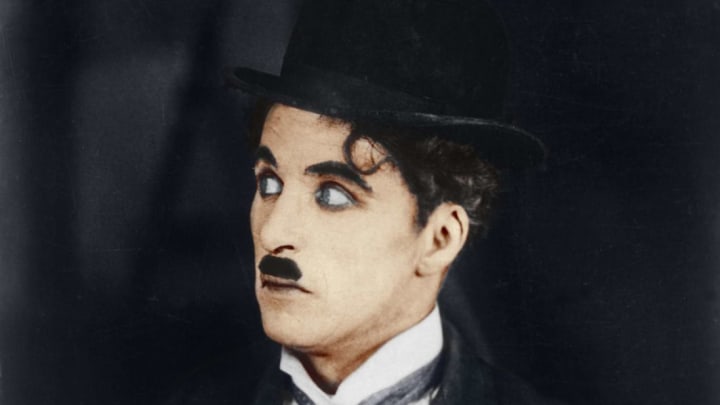Halfway through a meeting that so far has been full of nothing but useless chit-chat and vague ideas, you’re wishing people would get to the point—or, in other words, that they'd cut to the chase.
Much like getting on a soapbox or pushing the envelope, cutting to the chase used to be a literal action. When silent films became popular in the early 20th century, filmmakers couldn’t rely on dialogue—jokes, arguments, emotional declarations, criminal confessions, etc.—to keep viewers engaged. Instead, they got creative with physical comedy and action sequences, which often took the form of chase scenes.
While many chases featured cars, bicycles, or just people running for their lives, they weren’t quite as formulaic as you might be picturing. Stars like Charlie Chaplin and Buster Keaton were masters of making their chases both surprising and funny. In 1922’s Cops, for example, Keaton ends up sitting on a ladder seesawed over a fence, while police officers on either end try to pull it down.
In Chaplin’s 1928 film The Circus, a policeman follows him right into a circus ring, where the audience watches them run circles around each other on a rotating platform.
Since moviegoers loved to watch an outlaw on the run, chase scenes outlived the silent film era, and “cut to the chase” was common advice for filmmakers who needed to keep their movies from losing momentum.
“When they want to break it up a bit, the formula always is ‘cut to the chase,’” reporter Edwin C. Hill wrote in a 1939 article about the rising popularity of westerns. “There is, of course always a chase on, and it is a simple expedient to cut back to it when they think suspense has to be whipped up a bit.” Screenwriter Helen Deutsch, who penned classics like The Unsinkable Molly Brown (1964) and Valley of the Dolls (1967), even had a sign in her MGM office that read “When in doubt, cut to the chase.”
By the mid-20th century, cutting to the chase had already started to take on its modern meaning. Variety journalist Frank Scully mentioned it in his 1955 memoir Cross My Heart in reference to helping his Norwegian assistant learn English. “In teaching her, instead of going all the way back to Chaucer, I ‘cut to the chase’ and tutored her from copies of Variety,” he wrote.
Though the phrase is most often used figuratively these days, literal chase scenes have yet to become obsolete—and judging by the ongoing success of the Fast & Furious franchise, that won’t happen anytime soon.
Have you got a Big Question you'd like us to answer? If so, let us know by emailing us at bigquestions@mentalfloss.com.
